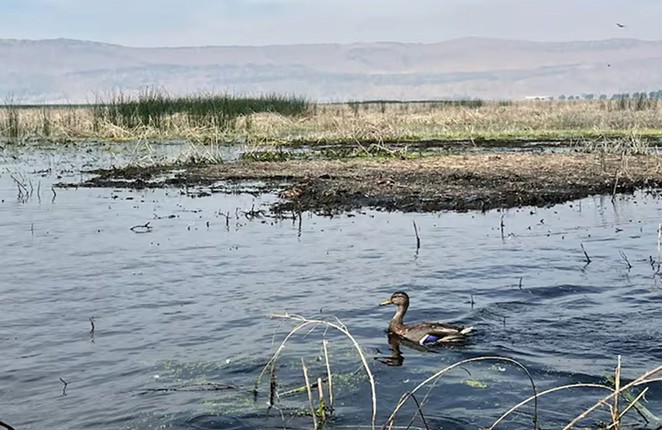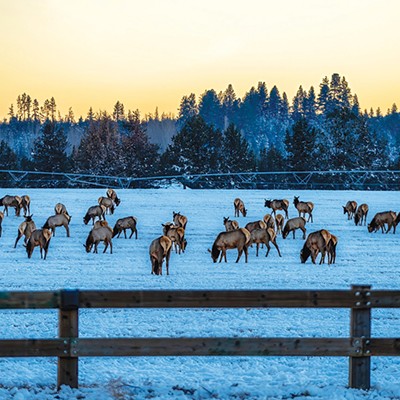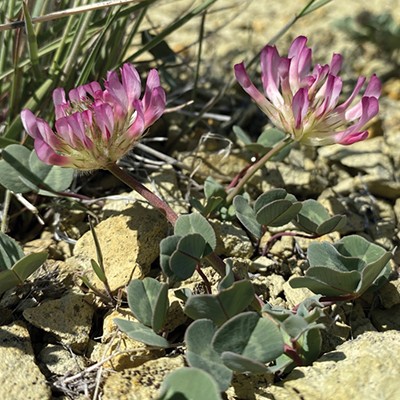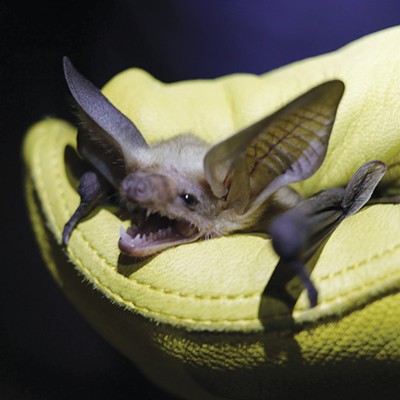A combination of botulism and bird flu has led to estimates of thousands of birds dying in the Klamath Basin National Wildlife Refuge Complex this summer.
Birds are dying at the Tule Lake National Wildlife Refuge in far Northern California. Last week, refuge staff deployed in a boat and collected 500 dead birds from Sump 1A, the largest water body in the Tule Lake Refuge.
John Vradenburg, supervisory biologist at the Klamath Basin National Wildlife Refuge Complex, suspects they're dealing with a dual outbreak of botulism and highly pathogenic avian influenza, which was discovered in the refuges earlier this summer.
"We're well-versed in botulism response," says Vradenburg. "This is a new pressure we've never dealt with."
Irrigators and waterfowl advocates are calling for managers at the U.S. Bureau of Reclamation to release water from Upper Klamath Lake and divert it to the refuges. Refuge staff are hoping the outbreak doesn't escalate into a repeat of 2020, when 60,000 ducks, geese, and shorebirds died of botulism.
"Any of us that had been here in 2020 were like, 'Oh my god; I don't want to deal with this again,'" says Vradenburg.

Echoes of 2020 outbreak
A complex of six wildlife refuges spanning the Oregon-California border, the Klamath Basin National Wildlife Refuge Complex serves as vital feeding and breeding grounds for tens of thousands of birds that use the Pacific Flyway to migrate.
The Lower Klamath and Tule Lake Refuges have been teeming with ducks, geese, grebes, and shorebirds this year, thanks in part to a wet winter and a greater allocation of water to the Klamath Project, the management project developed by the Bureau of Reclamation to supply farmers in the Klamath Basin with irrigation water. In spring, the Bureau of Reclamation diverted additional water to the refuges to avoid creating unsafe conditions on the Klamath River while three dams are being removed in Southern Oregon and far Northern California.
"Compared to what we can tell from historic records, this is the highest and most diverse waterbird population we've had on Tule Lake in three or four decades," says Vradenburg. He estimates there are about 30,000 nesting grebes on the large water body known as Sump 1A, and 250,000 molting birds and up to 60,000 ducklings on Sump 1A and Sump 1B combined.
The refuges rely on allocations from the Klamath Project for water; during the recent drought years, they received virtually none.
Tule Lake in particular has transformed, says Moss Driscoll, director of water policy for the Klamath Water Users Association, or KWUA. "What had been a 14,000-acre patch of weeds turned right back into an incredible vibrant wetland."
But after the last water releases from Upper Klamath Lake in May, the wetlands in the refuges began to warm and dry out, heightening the risk for an outbreak of avian botulism.
The disease is caused by a toxin produced by a certain species of soil-dwelling bacteria. Birds become poisoned when they ingest infected fish, water, plant matter, or invertebrates. Infected birds experience nerve damage, weakness, and paralysis; often, they drown because they can't hold their heads up. The disease spreads as birds feed on other maggot-infested bird carcasses.
The 2020 botulism outbreak was the worst in refuge history. The next summer, with the region still in the grips of a severe drought, a combination of luck and creative management helped avoid another disaster.
The key to preventing botulism "is not letting it get started," says Driscoll. Wetlands that remain flooded with water circulating through them are less likely to experience an outbreak.
On July 12, KWUA sent the Bureau of Reclamation a letter, urging the agency to take action to avoid a disease outbreak on the refuges, and to increase water allocations to irrigators to save this year's crop harvests.
Around that same time, refuge staff started spotting dead and dying eared grebes. All of the samples they collected tested positive for highly pathogenic avian influenza. This disease, also known as H5N1, has been ravaging wild and domestic birds across the globe. In the U.S., bird flu has spread to dairy cows, and there have been several confirmed cases of human infection.
The combination of bird carcasses, drying wetlands, and warm water created a "perfect storm" of conditions for botulism, says Vradenburg.
Though it's too late to prevent a botulism outbreak now, the damage could be minimized, say advocates. The Bird Alliance of Oregon (formerly Portland Audubon), California Waterfowl Association, and Ducks Unlimited have all called on the Bureau of Reclamation to divert water to the refuges immediately.
Vradenburg says that would help flush water through the system and cool temperatures. Perhaps most importantly, it would flood more wetlands, helping disperse birds across a greater area — an especially important strategy if the bird flu virus is still present.
In an Aug. 15 letter, KWUA called for "dynamic operations" to circulate water within and between the various wetlands in Tule Lake Refuge. The organization also urged the bureau to provide more water to the Lower Klamath Refuge to support the thousands of hatchlings there. Otherwise, the letter warned, this wetland could go dry before the birds have a chance to fledge.
The Bureau of Reclamation did not respond to JPR's questions in time for publication.
—This story was originally published by Jefferson Public Radio under a content sharing agreement with Oregon Public Broadcasting and has been edited for length.




















